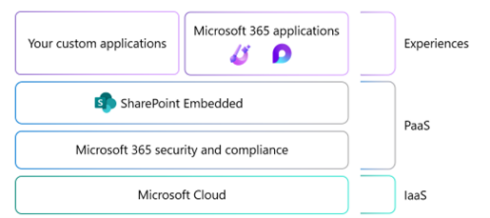
Microsoft released SharePoint Embedded into public preview to provide a new method for constructing custom content applications for enterprises and independent software vendors (ISVs).
This feature allows the development of headless, API-only content apps that can integrate various management functionalities such as collaboration, security, and compliance into any application. These apps store content within an enterprise’s existing Microsoft 365 tenant.
Enterprises can utilize SharePoint Embedded to create line-of-business apps, offering a unified experience for both users and system administrators managing these apps. Similarly, ISVs can employ this technology to include Microsoft 365 content management capabilities in every enterprise app they develop. With SharePoint Embedded, documents are managed within the customer’s Microsoft 365 tenant, providing a reliable and consistent content management system with global security and compliance features.
SharePoint Embedded is a versatile platform designed for use by both Microsoft’s in-house products and third-party apps developed by any developer, according to the company in a blog post that explains the full list of features in Sharepoint Embedded.
Microsoft Loop and Microsoft Designer, two recently launched apps, are powered by SharePoint Embedded. The platform is built on the same stack as SharePoint and OneDrive and stands out for its high scalability, performance, and suitability for hyperscale use cases.
Developers can integrate advanced Microsoft 365 security and compliance features, such as audit, eDiscovery, Bring Your Own Key, and more. The platform also enables the utilization of Microsoft 365 business continuity capabilities, including autoscaling, high availability, Microsoft 365 Backup, Microsoft 365 Archive, and disaster recovery.
Additionally, developers can incorporate Microsoft 365 collaboration features into their apps, such as coauthoring in Word or PowerPoint, and embed trusted content management capabilities like search, content preview, and version tracking, while also allowing for the customization of user experiences to exert complete control over security, lifecycle, and management.






